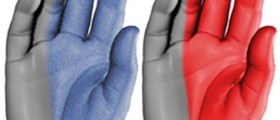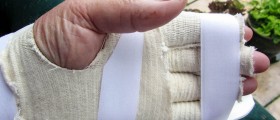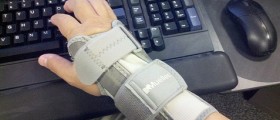
Carpal tunnel syndrome, sometimes called simply carpal tunnel, is a condition characterized by the pressure against the median nerve. That is the nerve located in the wrist, responsible for movement and sensitivity of the hand and fingers, especially those on the thumb side.
Symptoms of carpal tunnel syndrome
The nerve enters the hand through carpal tunnel, which is located in the wrist and is normally narrow. Any kind of swelling or trauma to the tunnel naturally causes pressure on the nerve, causing symptoms characteristic for carpal tunnel syndrome, such as weakness, tingling, numbness and pain.
Causes and determination of carpal tunnel syndrome
The main cause of carpal tunnel syndrome is repetitive movement such as typing on the keyboard, playing the piano, writing, painting, driving, sewing and such.
There is a very simple test that can confirm with certainty whether the symptoms are related to carpal tunnel syndrome or by something else. In this test, the patient is asked to bend the wrist. If the symptoms, especially the pain, occur after the physician taps the bent wrist with a ruler or a similar object, the problem is most likely caused by the pressure on the median nerve. However, additional nerve tests, such as nerve conduction velocity test and X-rays, are usually performed to confirm the diagnosis.
Treatment for carpal tunnel syndrome
The treatment for carpal tunnel may consist of special exercises, the use of splints or surgery, depending on the severity of the syndrome.
In most cases, exercises can be very helpful in relieving the symptoms, especially numbness and pain, and in increasing the mobility of the hand, wrist and fingers. Sometimes the simplest exercise, such as shaking hands, can be effective in reducing the pressure from the median nerve. The exercises are recommended by a physical therapist and need to be repeated on a daily basis.
Special splints or braces can also be used to relieve the symptoms of carpal tunnel syndrome. They can be obtained from a specialist, usually a rheumatologist or an orthopedist.
Medications and surgery
Anti-inflammatory medications, available over-the-counter, can be taken to relieve the pain.
Severe cases of carpal tunnel syndrome can be treated with cortisone injections or through surgery. The surgery consists of cutting away the roof ligament of the carpal tunnel. The procedure can be open or endoscopic. Endoscopic procedure is less invasive and it uses smaller incisions, thus leaving smaller scars. It also uses a tiny camera introduced through the incision in order to closely observe the carpal tunnel.

















Your thoughts on this
Loading...